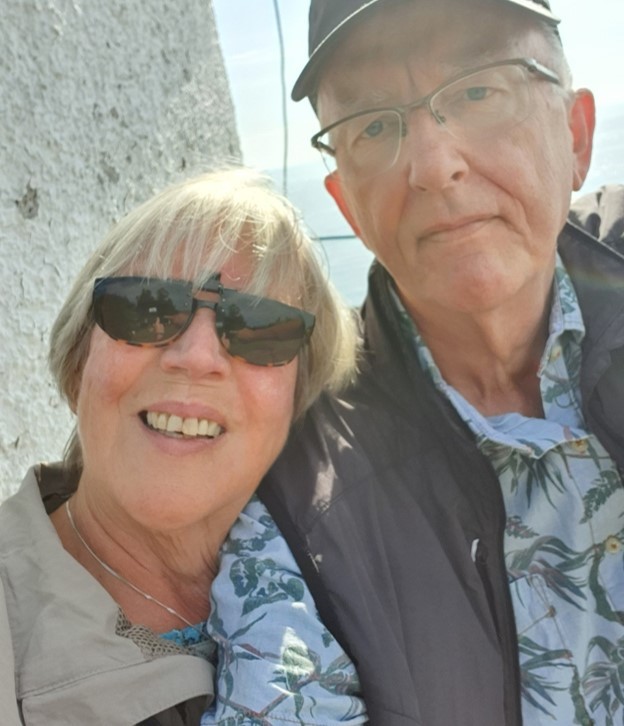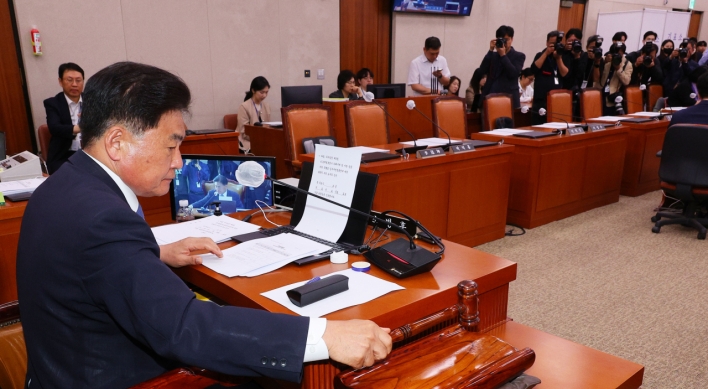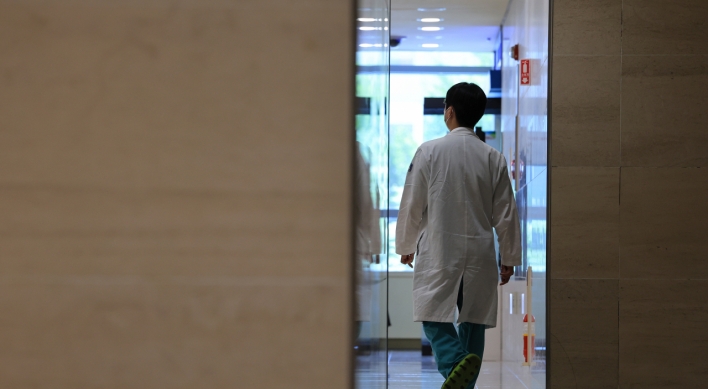The Swedish Red Cross Field Hospital film project
By Korea HeraldPublished : Sept. 28, 2020 - 10:13

In 2003, I was appointed by the Swedish government as Swedish member of the Neutral Nations Supervisory Commission, NNSC, in Panmunjom, South Korea. I served in that position for almost three years during 2004-2006. The NNSC is a body agreed upon in the armistice agreement of July 27, 1953, and my predecessors had their first meeting in Panmunjom on Aug.1, 1953.
Arriving in Korea, I learned that we, the Swedes in NNSC, were not the first Swedish unit operating in Korea in connection to the Korean War. On Sept. 23, 1950, short after the UNC breakout from the Busan perimeter, 174 Swedish medical personnel arrived in Busan harbor. After a four-week journey they were deployed just north of the city, in Bujeon-dong. They received their first 68 patients two days later. With that, the first non-American/Korean medical unit during the Korean War was established. In the largest humanitarian undertaking ever made by Sweden, volunteers rushed to help setting up the Swedish Red Cross Field Hospital in Busan.
Between Sept. 25, 1950, and Dec. 31, 1953, the hospital treated 19,100 UN soldiers and 2,400 Korean soldiers. In addition, even North Korean and Chinese prisoners of war and many civilian Koreans received medical care. The number of civilian patients increased significantly after the war. The hospital received more than 250,000 visiting civilian patients during its seven years of operation in Busan.
During the war and until 1958, a total of 1,124 Swedish men and women served at the Swedish hospital in Busan. I found it very interesting, and also very impressive, that personnel to the first group of staff was recruited in Sweden on very short notice in the end of July 1950, just after the battle of Daejeon was lost and the North Koreans were fast approaching Busan.
After returning to Sweden in 2006, I found that not many Swedes knew about the history of the Swedish field hospital in the Korean War. When I was elected to be president of the Korean Association in Sweden, and the Swedish Korean War Veteran Association, I decided to do something about this lack of knowledge. Although not decisive to the outcome of the war, the Swedish contribution had an impact on all involved and made a significant difference to many during and after the war. In our Association, we realized that the aging Swedish samaritans could still testify how the Korean War became the start of new relations, new friendships, and lasting, strong bonds between Sweden and Korea.
As chairman of the Swedish Army-, Navy- and Air Force Foundation (AMF), I managed to convince the foundation’s film company, AKA-Film, to make a documentary. The film project is a documentary about the men and women who travelled to far away Korea and about their meetings with wounded soldiers and local patients. We made filmed interviews with the war veterans, most of them now in their 90’s, some even 100 years old.
The Korean Association in Sweden, a non-profit organization, organized the interviews and did all the research. That was of course a logistical challenge, since the veterans live all over Sweden (four times larger than South Korea). We managed to organize around 30 interviews, and after that, the film director, Michael Hedlund, was satisfied. He quickly made a 12-minute promotion film to help raise the necessary funds to complete the documentary.
Together with the producer, Peter Nordström, and my wife Kerstin (she was responsible for communications and contact with the veterans), we went to South Korea to do research and promote the project. Actually, we went there three times during the project. In October 2016, we visited Seoul. My counterpart in South Korea, the president of the Korean-Swedish association, Park Min-sun, arranged for us to appear on a TV talk show. There we could present the film project and the promotion video was screened. The talk show host invited the viewers to phone in to the show if they had any memories from the Swedish hospital in Busan during the Korean war.
Eight people contacted the show and three of them could speak directly into the program. We got the contact information and with help from the Swedish Embassy in Seoul and the Busan Nam-gu Office, we could film interviews with them. All of them told touching stories.
An especially touching one is the story about “Sabo”. He was just a couple of years old when he came to the Swedish field hospital with a badly injured leg after having been run over by a truck. The doctors could not save his leg and it had to be amputated. One doctor made an artificial leg and after a while he could play around in the hospital area. The entire staff became engaged. Everybody wondered what would happen to him in the war-torn country. We managed to find him, his true name is Park Man-soo. He was happy to meet us and allowed us to film an interview, which is now part of the film.
Due to time restrictions, we had to stop interviewing people. Otherwise, I guess we could still go on, finding new ones. Unfortunately, the Swedish staff and other Korean war veterans are getting older and older. I only know of one Swedish veteran who is still not 90 years old. Some of those who appear in the film have now passed away.
We screened the first full version of the film in February 2019, with Swedish veterans and their families present. More than 300 people came to the Swedish Film Institute theaer in Stockholm. The documentary will be broadcast on Swedish television in the autumn of 2020 and it has already been shown on Finnish TV. The film company is of course also trying to find ways to show the documentary to the Korean people.
The veterans’ memories from the Korean War are vanishing away and fewer and fewer can tell of them. These are stories never told before, and an important and touching part of our understanding of the building of democratic nations and their international relations. With the purpose to save those stories for future generations to learn from, I have during the project collected films, photos and items from the Korean War from the veterans. Photos have been scanned and my plan is to assemble some of them in a book, presenting the story of the Swedish Red Cross Field Hospital.
In 1954, the military hospital was reconstituted into the Swedish Hospital in Busan and became, more or less, a civilian hospital until April 1957 when it ceased its activities. A smaller group of staff remained as aid for the Korean Red Cross until the autumn of 1958. The Scandinavian teaching hospital, which is today‘s National Medical Center, was formed in Seoul in 1958, where 90 different positions were assigned to Scandinavian doctors and nurses. The NMC was transferred to the Korean Government in 1968 after nearly 150 Swedes had served there.
Still, one can visit a small museum in central Seoul to remember the Scandinavians at the NMC, although there are plans to move the hospital out of the city center. Together with the Swedish presence in Panmunjom there might be enough stories for a second documentary!
The writer is a retired major general of the Swedish army and incumbent president of the Korean-Swedish Association and the Swedish Korean War Veteran Association in Sweden. Views expressed here are his own.
By Lars Frisk
Arriving in Korea, I learned that we, the Swedes in NNSC, were not the first Swedish unit operating in Korea in connection to the Korean War. On Sept. 23, 1950, short after the UNC breakout from the Busan perimeter, 174 Swedish medical personnel arrived in Busan harbor. After a four-week journey they were deployed just north of the city, in Bujeon-dong. They received their first 68 patients two days later. With that, the first non-American/Korean medical unit during the Korean War was established. In the largest humanitarian undertaking ever made by Sweden, volunteers rushed to help setting up the Swedish Red Cross Field Hospital in Busan.
Between Sept. 25, 1950, and Dec. 31, 1953, the hospital treated 19,100 UN soldiers and 2,400 Korean soldiers. In addition, even North Korean and Chinese prisoners of war and many civilian Koreans received medical care. The number of civilian patients increased significantly after the war. The hospital received more than 250,000 visiting civilian patients during its seven years of operation in Busan.
During the war and until 1958, a total of 1,124 Swedish men and women served at the Swedish hospital in Busan. I found it very interesting, and also very impressive, that personnel to the first group of staff was recruited in Sweden on very short notice in the end of July 1950, just after the battle of Daejeon was lost and the North Koreans were fast approaching Busan.
After returning to Sweden in 2006, I found that not many Swedes knew about the history of the Swedish field hospital in the Korean War. When I was elected to be president of the Korean Association in Sweden, and the Swedish Korean War Veteran Association, I decided to do something about this lack of knowledge. Although not decisive to the outcome of the war, the Swedish contribution had an impact on all involved and made a significant difference to many during and after the war. In our Association, we realized that the aging Swedish samaritans could still testify how the Korean War became the start of new relations, new friendships, and lasting, strong bonds between Sweden and Korea.
As chairman of the Swedish Army-, Navy- and Air Force Foundation (AMF), I managed to convince the foundation’s film company, AKA-Film, to make a documentary. The film project is a documentary about the men and women who travelled to far away Korea and about their meetings with wounded soldiers and local patients. We made filmed interviews with the war veterans, most of them now in their 90’s, some even 100 years old.
The Korean Association in Sweden, a non-profit organization, organized the interviews and did all the research. That was of course a logistical challenge, since the veterans live all over Sweden (four times larger than South Korea). We managed to organize around 30 interviews, and after that, the film director, Michael Hedlund, was satisfied. He quickly made a 12-minute promotion film to help raise the necessary funds to complete the documentary.
Together with the producer, Peter Nordström, and my wife Kerstin (she was responsible for communications and contact with the veterans), we went to South Korea to do research and promote the project. Actually, we went there three times during the project. In October 2016, we visited Seoul. My counterpart in South Korea, the president of the Korean-Swedish association, Park Min-sun, arranged for us to appear on a TV talk show. There we could present the film project and the promotion video was screened. The talk show host invited the viewers to phone in to the show if they had any memories from the Swedish hospital in Busan during the Korean war.
Eight people contacted the show and three of them could speak directly into the program. We got the contact information and with help from the Swedish Embassy in Seoul and the Busan Nam-gu Office, we could film interviews with them. All of them told touching stories.
An especially touching one is the story about “Sabo”. He was just a couple of years old when he came to the Swedish field hospital with a badly injured leg after having been run over by a truck. The doctors could not save his leg and it had to be amputated. One doctor made an artificial leg and after a while he could play around in the hospital area. The entire staff became engaged. Everybody wondered what would happen to him in the war-torn country. We managed to find him, his true name is Park Man-soo. He was happy to meet us and allowed us to film an interview, which is now part of the film.
Due to time restrictions, we had to stop interviewing people. Otherwise, I guess we could still go on, finding new ones. Unfortunately, the Swedish staff and other Korean war veterans are getting older and older. I only know of one Swedish veteran who is still not 90 years old. Some of those who appear in the film have now passed away.
We screened the first full version of the film in February 2019, with Swedish veterans and their families present. More than 300 people came to the Swedish Film Institute theaer in Stockholm. The documentary will be broadcast on Swedish television in the autumn of 2020 and it has already been shown on Finnish TV. The film company is of course also trying to find ways to show the documentary to the Korean people.
The veterans’ memories from the Korean War are vanishing away and fewer and fewer can tell of them. These are stories never told before, and an important and touching part of our understanding of the building of democratic nations and their international relations. With the purpose to save those stories for future generations to learn from, I have during the project collected films, photos and items from the Korean War from the veterans. Photos have been scanned and my plan is to assemble some of them in a book, presenting the story of the Swedish Red Cross Field Hospital.
In 1954, the military hospital was reconstituted into the Swedish Hospital in Busan and became, more or less, a civilian hospital until April 1957 when it ceased its activities. A smaller group of staff remained as aid for the Korean Red Cross until the autumn of 1958. The Scandinavian teaching hospital, which is today‘s National Medical Center, was formed in Seoul in 1958, where 90 different positions were assigned to Scandinavian doctors and nurses. The NMC was transferred to the Korean Government in 1968 after nearly 150 Swedes had served there.
Still, one can visit a small museum in central Seoul to remember the Scandinavians at the NMC, although there are plans to move the hospital out of the city center. Together with the Swedish presence in Panmunjom there might be enough stories for a second documentary!
The writer is a retired major general of the Swedish army and incumbent president of the Korean-Swedish Association and the Swedish Korean War Veteran Association in Sweden. Views expressed here are his own.
By Lars Frisk
-
Articles by Korea Herald









![[Kim Seong-kon] Democracy and the future of South Korea](http://res.heraldm.com/phpwas/restmb_idxmake.php?idx=644&simg=/content/image/2024/04/16/20240416050802_0.jpg&u=)









![[Today’s K-pop] Zico drops snippet of collaboration with Jennie](http://res.heraldm.com/phpwas/restmb_idxmake.php?idx=642&simg=/content/image/2024/04/18/20240418050702_0.jpg&u=)